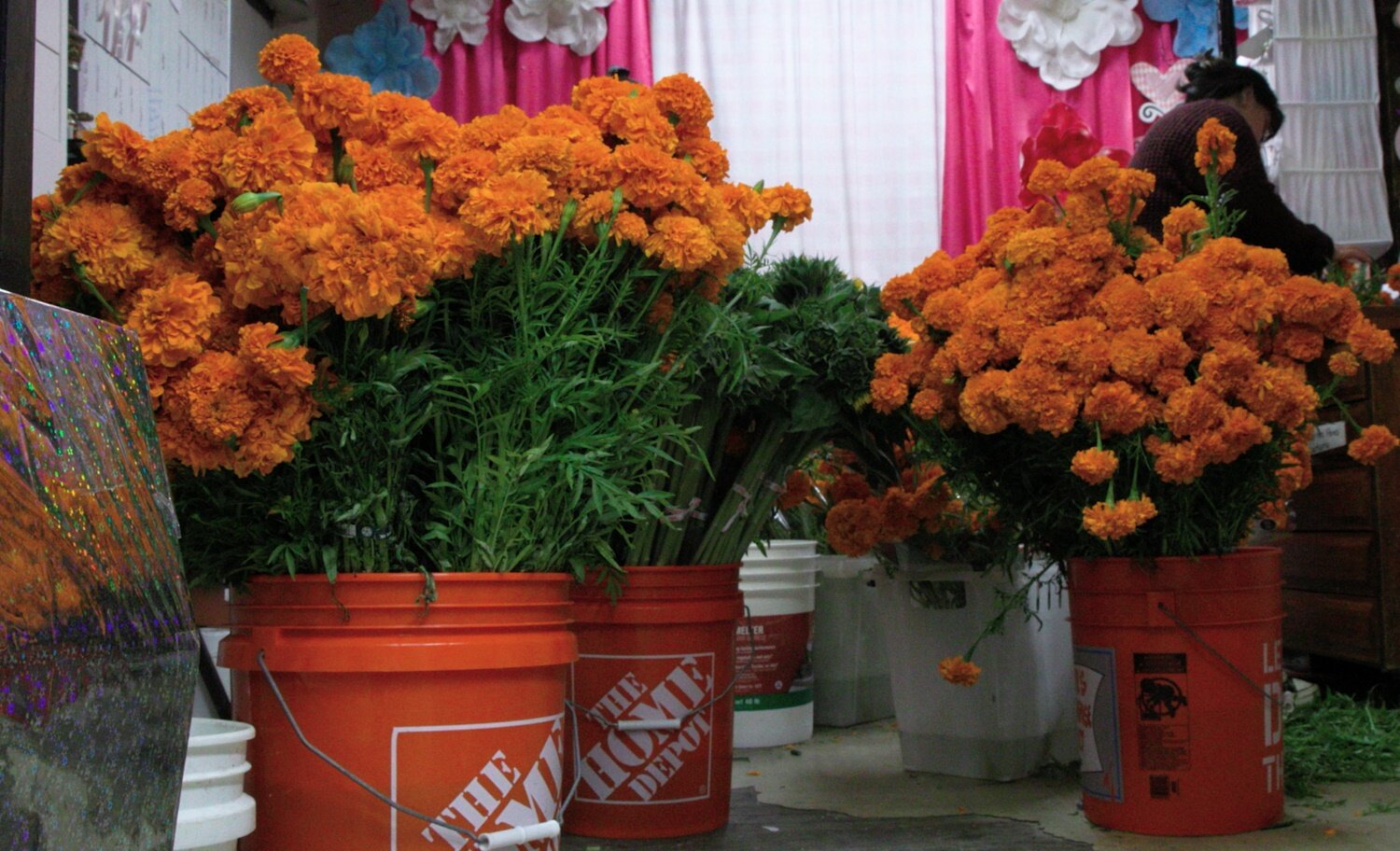Denver florist brightens Día de los Muertos tradition

DENVER — More than a thousand flowers blanketed the backroom of La Fiesta Flowers and Piñatas as employees prepared for Day of the Dead, or Día de los Muertos in Spanish, Nov. 1-2. The pungent smell of the marigold flower, or cempasúchil, drifts through the store.
"I really love that smell. It reminds me of Mexico," said Marta Jamison, owner of La Fiesta on Federal Boulevard.
Día de los Muertos is a holiday that reunites the living and the dead, where it’s believed the portal to the spirit world opens and deceased family members make their annual pilgrimage back home. In preparation for their return, families build altars with offerings of food, drinks, personal mementos and cempasúchil.
The bright orange color of the flowers plays a critical role. “It’s light around the altar. It’s the only color the souls can see,” said Jamison, and the brightness of the flowers helps guide the dead to the offering.
Day of the Dead rituals date back more than 3,000 years to the pre-Columbian era in what is now Mexico. Indigenous Aztec practices then combined with influence from the Catholic Church to celebrate the dead on All Souls Day.

People travel from all across the Denver metro area for the Marigolds that Jamison imports directly from Mexico.
Photo: Lizzie Mulvey, Rocky Mountain PBS
“It’s a syncretic holiday—a mixture of Catholic religious belief and indigenous religious belief, and it represents a religious exchange,” said Michael Abeyta, an associate professor of Spanish American literature and culture at the University of Colorado Denver.
“When you think about an altar being built in the home, that's an extension of the church. When you think about the offering of bread to the dead, that's an extension of Holy Communion,” Abeyta said.
In recent years, the Día de los Muertos celebrations — and the market for marigolds — have expanded well beyond Mexico. When Jamison first purchased La Fiesta in 2018, her customers were 80 percent Hispanic, she said. Today, she estimates her customer base is approximately half Hispanic. Customers travel more than an hour from across the Denver metro area for her flowers, which she sources directly from Mexico.

Ofrendas feature bright flowers because they represent "light around the altar," according to Jamison.
Photo: Lizzie Mulvey, Rocky Mountain PBS
“Flowers are part of that agricultural cycle of regeneration,” said Abeyta. “For a flower to reproduce, it has to die. It spreads its seeds, and the seeds come back. In a sense, for the Aztecs, that represented human life.”
The cempasúchil continues to have a powerful spiritual and religious significance today. “The flower represents the beauty of life,” he said. “Life is beautiful, but it is short.”
Lizzie Mulvey is executive producer of investigative journalism at Rocky Mountain PBS. You can reach Lizzie at lizziemulvey@rmpbs.org.